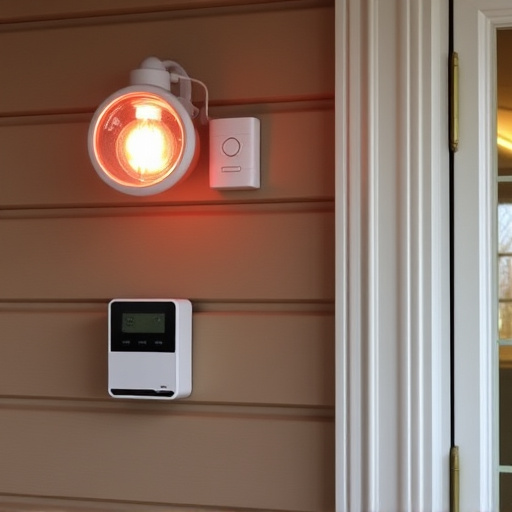DIY home alarms offer an affordable, customizable solution for homeowners seeking property protection without disturbing pets. These systems feature pet-friendly sensors that utilize advanced motion detection and activity analysis to distinguish between pet behavior and intruders, minimizing false alarms. Installation involves strategically placing sensors while considering pet activities, with regular maintenance including sensor testing, battery checks, software updates, and familiarizing pets with alarm triggers. This ensures a reliable system that enhances home security without compromising comfort for furry companions.
Looking to secure your home without compromising on pet safety? DIY home security systems equipped with pet-friendly sensors are an innovative solution. This article guides you through the process of understanding DIY home alarms and their benefits, selecting compatible sensors for your furry friends, and offers essential installation, maintenance, and safety tips. Discover how to create a robust yet compassionate defense mechanism for your home and pets.
Understanding DIY Home Alarms and Their Benefits
DIY home alarms have gained immense popularity as a secure and cost-effective way to protect one’s property. These systems empower homeowners to take control of their safety by offering a range of customizable options. By installing pet-friendly sensors, DIY alarm kits cater to every member of the family, including furry friends. This approach ensures that your home is protected without causing any discomfort or stress to your pets.
The benefits are manifold: from real-time alerts on your smartphone to advanced motion detection, these alarms provide peace of mind. Homeowners can monitor their property remotely and quickly respond to potential threats. Moreover, DIY systems allow for easy expansion and customization based on individual needs, making them a versatile and efficient solution for enhancing home security.
Choosing Pet-Friendly Sensors for Your System
When setting up a DIY home alarm system, selecting pet-friendly sensors is a smart move. Traditional security sensors often trigger due to pets’ natural behaviors like pacing, scratching, or jumping, leading to false alarms and potential frustration for both homeowners and their furry friends. Pet-friendly sensors are designed to recognize these patterns and avoid unnecessary alerts, ensuring your DIY home alarms provide reliable protection without the hassle.
These sensors use advanced technology, such as motion detection with weight-based triggers and activity analysis, to differentiate between a pet’s movements and an intruder’s. They learn your pet’s routine and can even adapt to individual pets’ habits, making them an integral part of creating a secure environment that accommodates your beloved animals.
Installation, Maintenance, and Safety Tips
Setting up a DIY home security system can be an attractive option for many homeowners, offering flexibility and customization. However, ensuring it’s pet-friendly is crucial to avoid false alarms and maintain a harmonious living environment. The installation process involves strategically placing sensors, taking into account common pet behaviors like jumping, running, or climbing. Motion detectors should be positioned at a height that suits both humans and pets, while door/window sensors can be adjusted for specific openings.
Regular maintenance is key to keeping your DIY home alarms reliable. This includes regularly testing sensors to ensure they respond accurately to potential threats, not just your pet’s routine activities. Battery checks and replacements are also essential, as are software updates if your system is smart home-enabled. Safety tips include familiarizing yourself and your pets with the alarm triggers to avoid unnecessary stress, and creating a safety plan for everyone in the household, including pets, during an actual emergency.
